GACT Research Strategy, Projects and Outreach
Skeletal remains are rare and deposited post-mortem, thus limiting our capacity to study human and animal activities during their lifespans, as well as their global impact through time. Sediments from caves usually represent precise archaeological contexts, enabling a direct link with past human occupation and behaviour spanning over a million years. Therefore, caves and their sediments are invaluable archives for examining long-term relationships and impacts that humans may have had on animal, plant and microbial communities, both within and outside of the immediate cave environment. Today, cave conservation specialists consider humans to be detrimental to cave environments. But in the past, humans resided in caves alongside other inhabitants. We investigate the impact humans have had on cave ecosystems through time.
In the first four years of funding, our goal is to create a strong network of researchers and students at Tübingen who study caves using a holistic approach by broadening existing synergies between the Senckenberg Centre for Human Evolution and Palaeoenvironment (SHEP), the Science Faculty (Departments of Geosciences and Bioinformatics) and the Interfaculty Institute for Microbiology and Infection Medicine at the University of Tübingen and the Max Planck Institute for Biology Tübingen. Moreover, GACT develops and expands connections with local institutions including the UNESCO Global Geopark Swabian Alb, Landesamt für Denkmalpflege, Landesverband für Höhlen- und Karstforschung and Arbeitsgemeinschaft Fledermausschutz Baden Württemberg, among others. Under the GACT umbrella these institutions combine their expertise in an entirely new framework built around Tübingen and help providing a platform for transforming innovative scientific research into societally relevant results.
GACT comprehensively investigates the relationship between human occupation of caves and their ecosystems from a multiscalar perspective. The three interlinked Research Areas (RA) span the microscopic to macroscopic and employ novel scientific approaches.
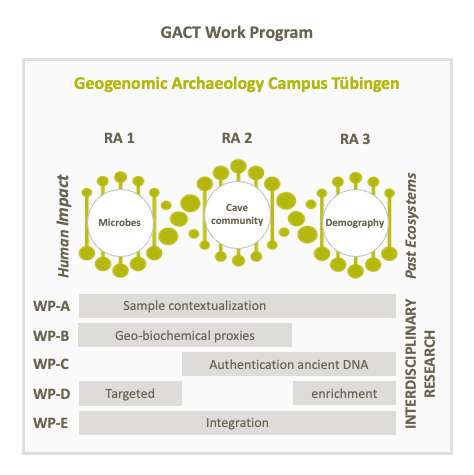
RA 1. Microbes: understanding cave sediments as microbiota archives.
RA 2. Cave ecology: impact of humans, animals and plants.
RA 3. Demography: genomic changes in human and animal populations.
We have active high profile excavations across three continents and we select localities with cave sediments spanning from the Pleistocene to the present containing varied ecosystems and, when possible, with previously documented ancient DNA preservation. Among others, these include UNESCO caves of the Swabian Jura such as Hohle Fels and Hohlenstein-Stadel. Our network aims to:
- be complementary to the genomic approaches developed within the University
- provide a deep-time perspective of human impact on biodiversity and ecosystems for the Senckenberg special item of expenditure „Anthropocene Biodiversity Loss“
- develop novel approaches to the field of Collectomics using the world-largest Geoarchaeology collection curated by SHEP as a resource to generate immortalized and fully digitized Palaeogenetics libraries
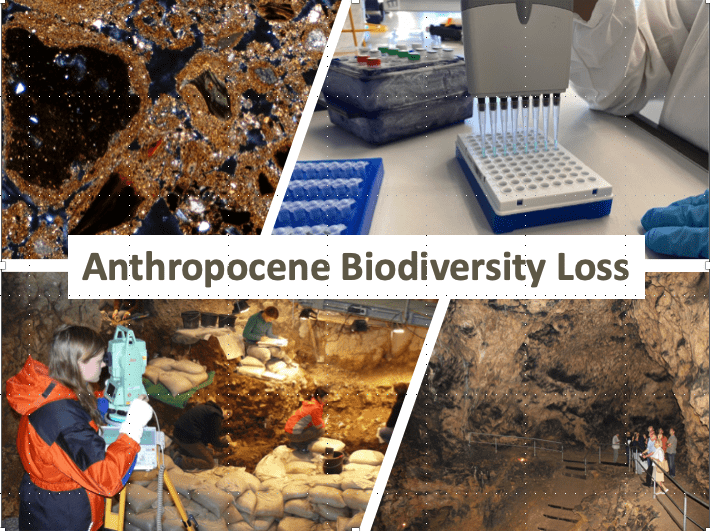
Site Distribution
Our research focuses on cave sites in SW Germany, Serbia, NW America and South Africa.
Funded Projects
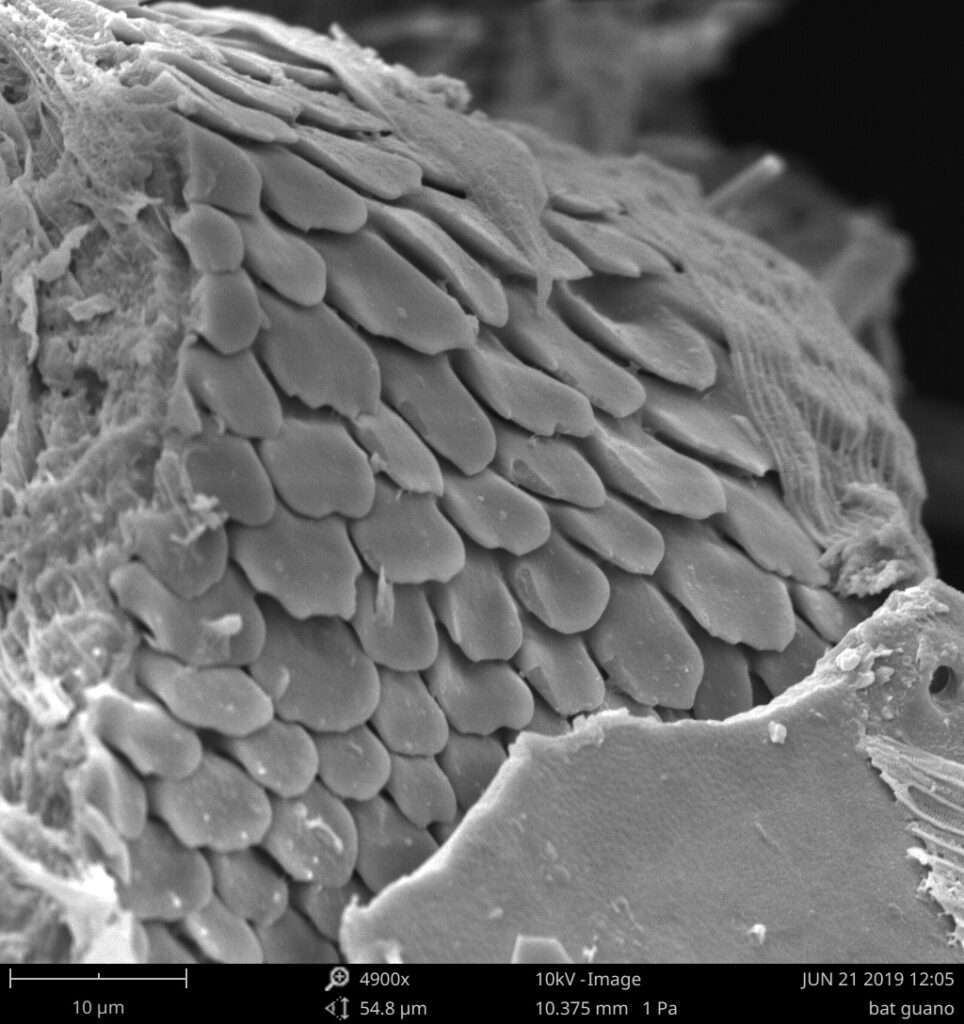
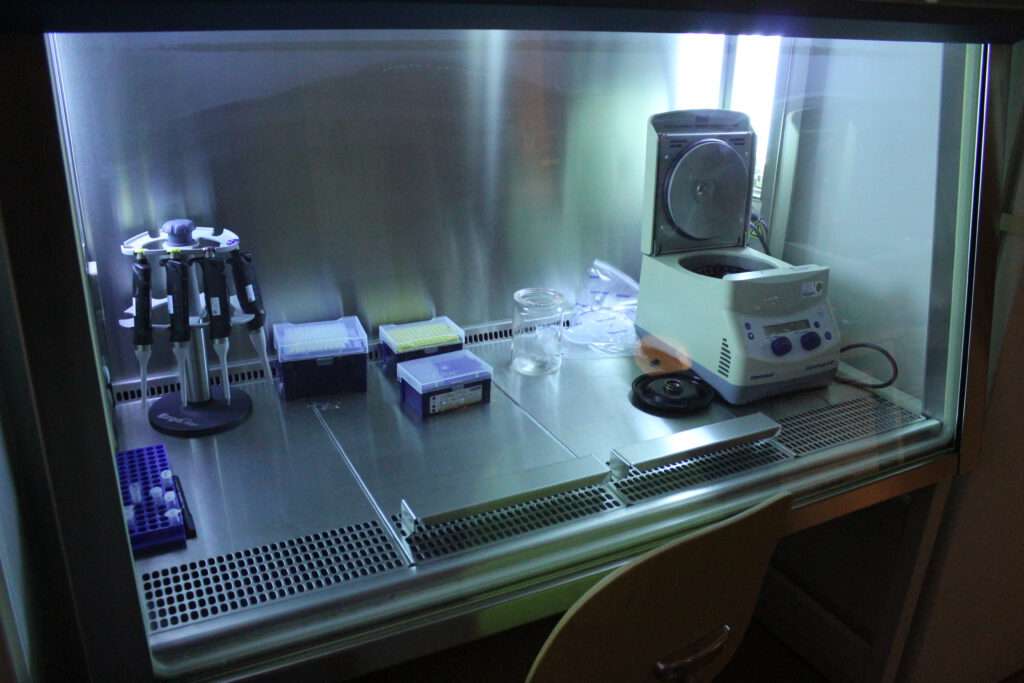
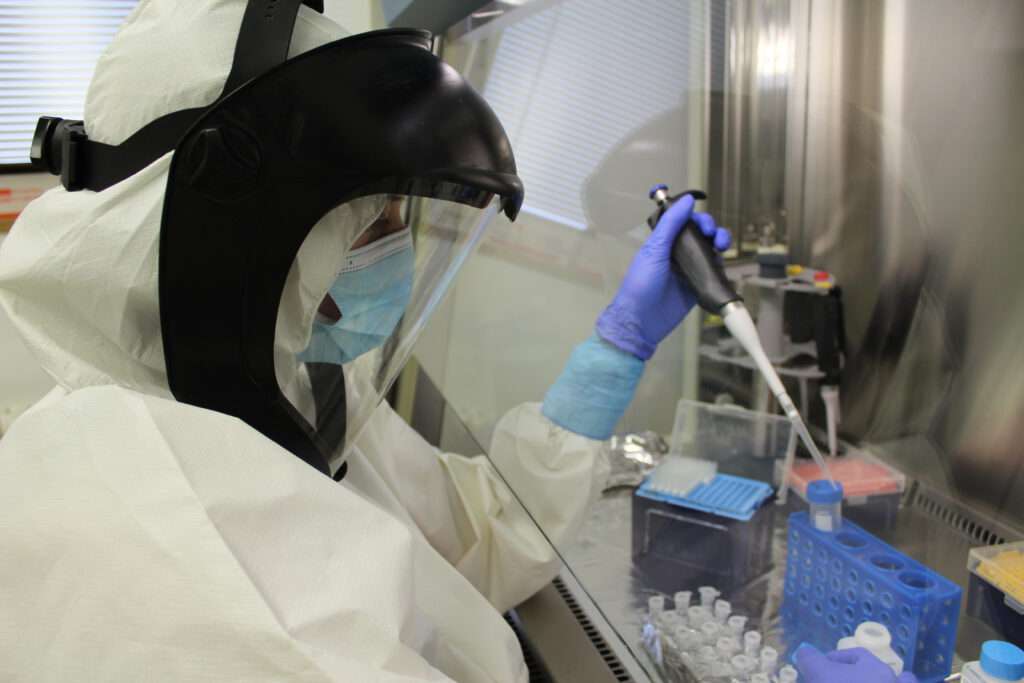
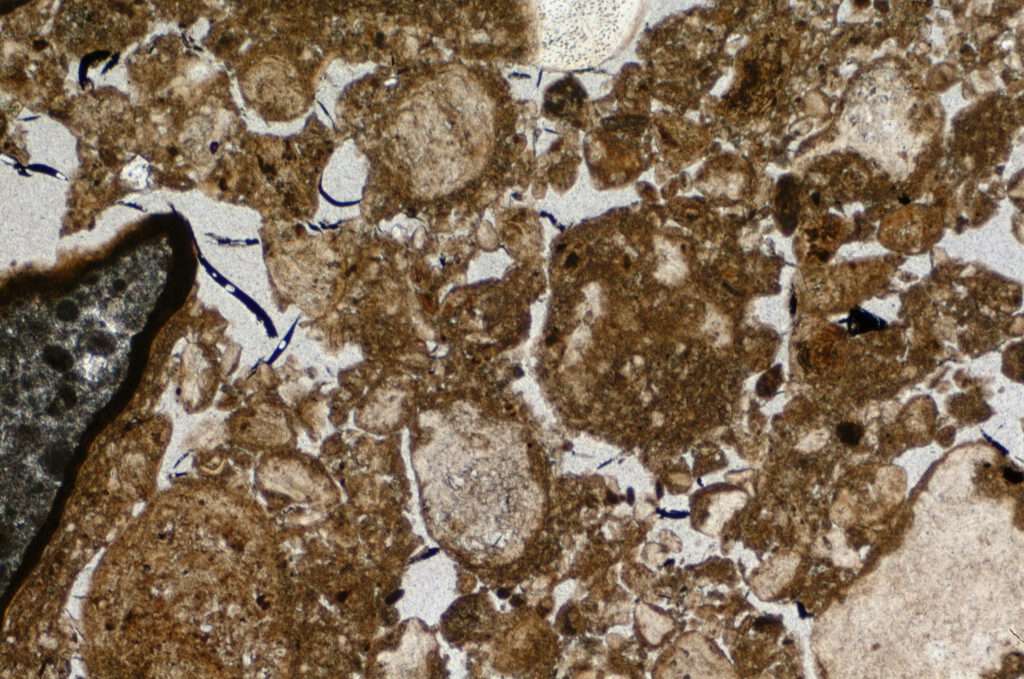
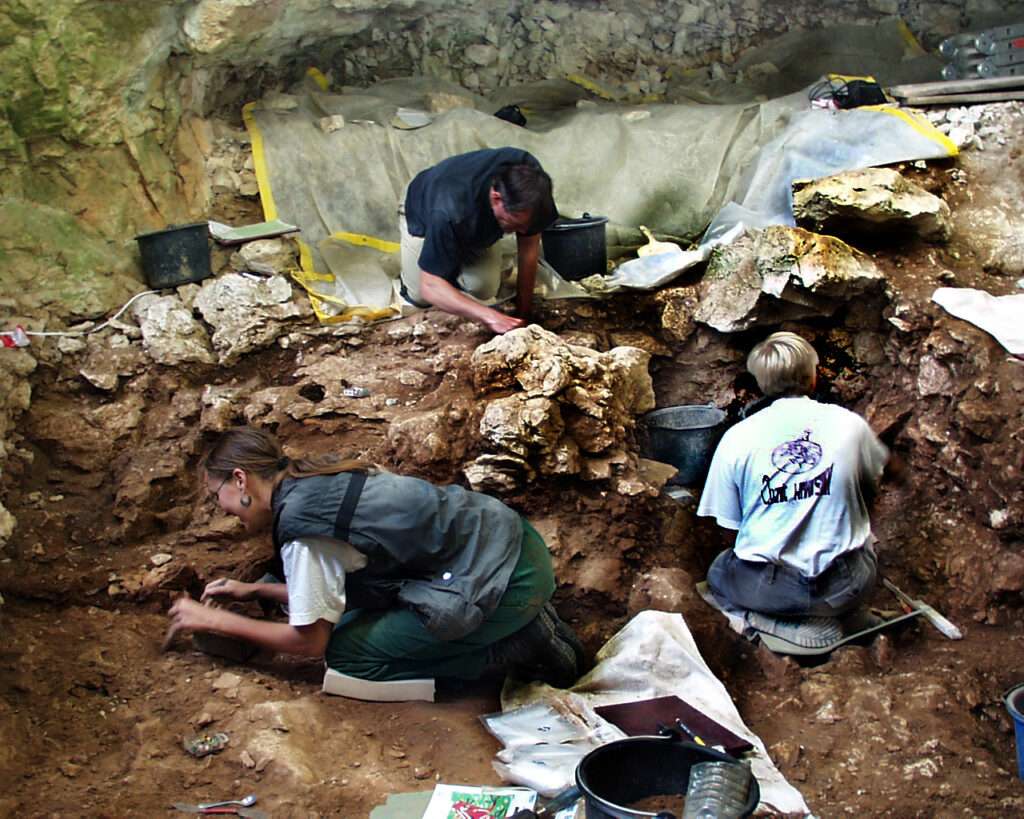
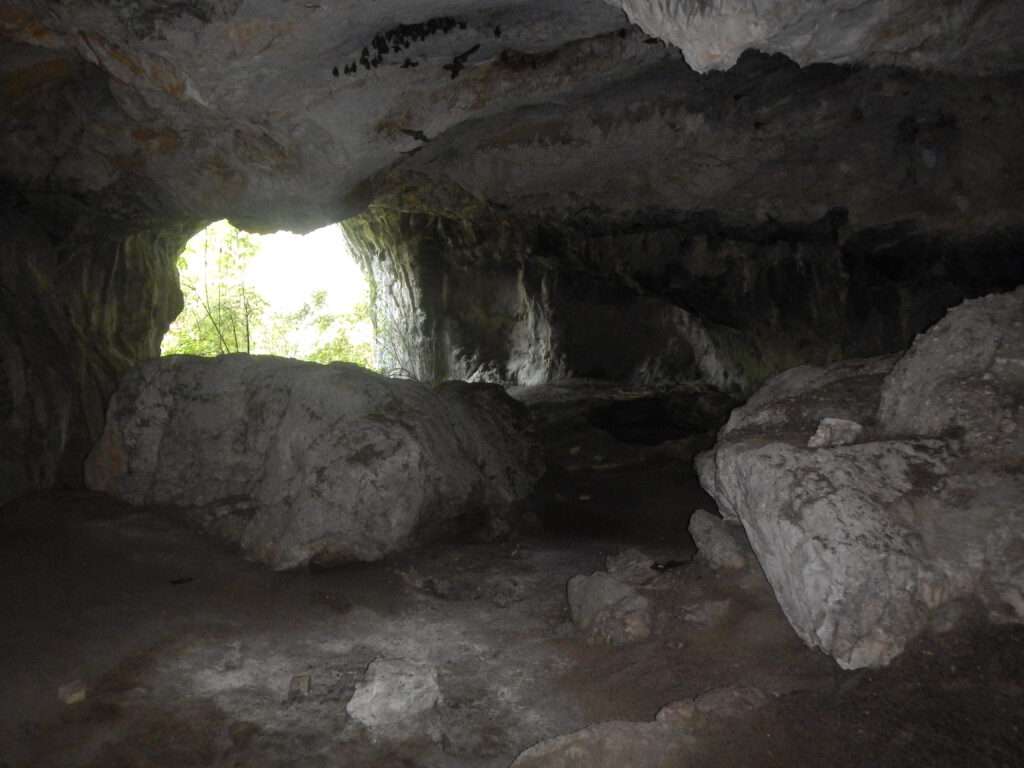
Early Career Projects
- Participating Scientists: Ani Hristonova (GACT PhD)
Title: Reflected Light and Fluorescence Microscopy Analyses of Thin Sections from the cave sites of Mala Balanica and Velika Balanica, Serbia
Funded Projects
- Participating Scientists: Dr. Greta Brancaleoni (GACT Visiting Researcher)
Title: Exploring the effects of stabling activities on the geo- and eco-systems of caves in Central Asia: Surungur rockshelter case-study (Kyrgyzstan)
- Participating Scientists: Andrei Bâlârie (GACT Visiting Researcher)
Title: Human-Cave Interactions Through Time: A Multidisciplinary Approach to Late Bronze Age and Paleolithic Occupations in Peștera cu Apăă
- Participating Scientists: Sibylle Wolf (GACT member), Ewa Dutkiewicz (Associated researcher)
Title: Chronologies and Cave Safety: Radiocarbon Dating and Infrastructure Support for Archaeological Research in Peștera Româneşti and Associated Caves in Western Romania
- Participating Scientists: Markus Maisch, Valdir Novello, Armelle Ballian (all GACT member)
Title: EARTH MEMORY – Caves as Memory Archives of Climate and Life
- Participating Scientists: Martin Ebner (GACT member), Miranda Tatiana
Title: Palynological analysis of Romanești cave sediments in Romani
- Participating Scientists: Víctor Fernández Roces (GACT postdoc)
Title: GACT-Explorer: enhancing GACT research and education via open and interactive applications for ancient DNA and associated data.
- Participating Scientists: Nicholas Conard and GACT members
Title: Archaeological excavations at Hohle Fels and Sibhudu
Early Career Projects
- Participating Scientists: Jens Grammer (GACT PhD), Prof. Dr. Yvonne Oelmann
Title: Phosphorus Dynamics in Caves: Bridging Ecology and Archaeology - Participating Scientists: Freya Steinhagen (GACT PhD)
Title: Experimental bead mill set up for the homogenization of previously extracted parasite eggs.
Funded Projects
- Participating Scientists: Elisa Luzi (GACT member)
Title: aDNA Analsysis Myopus and Lemmus in Hohle Fels - Participating Scientists: Dr. Susan Mentzer (GACT member)
Title: Rampart Cave excavation - Participating Scientists: Prof. Dr. Nicholas J. Conard (GACT member)
Title: Excavation in Hohle Fels - Participating Scientists: Dr. Valdir Novello (GACT member)
Title: Cave monitoring of the Swabian Alb
- Participating Scientists: Ani Hristonova (GACT PhD), Dr. Susan Mentzer
Title: 14C dates for Boomplaas Cave - Participating Scientists: Chiara Belli (GACT member)
Title: Archaeobotanical analysis of 500 charcoal items from Ghar-e Boof - Participating Scientists: Elisa Luzi (GACT member)
Title: Dating Langmahdhalde - Participating Scientists: Dr. Nemanja Marković (GACT Visiting Researcher)
Title: Parasitism and pleistocene human palaeoenvironment in the Western Balkans: Establishing a multidisciplinary protocol
PhD and PostDoc Projects
- Project title: Metagenomic interaction analysis of mammalian species in prehistoric cave contexts
PhD candidate: Freya Steinhagen
Participating Scientists: Prof. Dr. Cosimo Posth, Prof. Dr. Christopher Miller, Dr. Susan Mentzer - Project title: Geogenomic Archaeology of biogenic deposits in caves
PhD candidate: Ani Hristonova
Participating Scientists: Prof. Dr. Christopher Miller, Dr. Susan Mentzer, Prof. Dr. Cosimo Posth - Project title: Phosphorus Dynamics in Caves: Bridging Ecology and Archaeology
PhD candidate: Jens Grammer
Participating Scientists: Prof Dr. Yvonne Oelmann, PD Dr. Harald Neidhardt, Prof. Dr. Christopher Miller, Dr. Susan Mentzer - Project title: Bioinformatics methods for ancient metagenome data collected from sediment and cave samples
PhD candidate: Meret Häusler
Prof. Prof. Dr. Kay Nieselt, Prof. Dr. Daniel Huson, Prof. Dr. Cosimo Posth
- Project title: Developing an ancient DNA classifier for eukaryotic species
Postdoc: Víctor Fernández Roces
Participating Scientists: Prof. Dr. Hajk Drost, Prof. Dr. Cosimo Posth, Prof. Dr. Detlef Weigel - Project title: Developing experiments to assess the effects of phosphorus and other soil components on the mobility and recovery of ancient DNA.
Postdoc: Milan Varsadiya
Participating Scientists: Prof. Dr. Andreas Kappler, Prof. Dr. Michaela Dippold, Jun. Prof. Dr. Cosimo Posth, Prof. Dr. Christopher Miller
Publications
Publications
Häusler, M., Grammer, J., Hristonova, A., Steinhagen, F., Bigga, G., Auf Spurensuche in Serbien. Warum Forschende aus Tübingen in Höhlen nach uralter DNA suchen. Senckenberg-Magazin 1-3 2026.
Bigga, G., DNA from soil could soon reveal who lived in ice age caves. The Conversation online (December 2, 2025).
https://theconversation.com/dna-from-soil-could-soon-reveal-who-lived-in-ice-age-caves-270318
G. Brancaleoni, S. V. Shnaider, M. Blinnikov, K. Boxleitner, S. M. Mentzer, V. Alekseitseva, S. V. Zhilich, T. Chargynov, S. Alisher kyzy, E. V. Parkhomchuk, R. Spengler, B. Viola, A. I. Krivoshapkin, M. T. Krajcarz (2025)
Inner Asian Agropastoralism Within the Mongol Empire: Multi-Proxy Investigations at Sel’Ungur Cave, Kyrgyzstan.” Geoarchaeology 40.: 1– 29. https://doi.org/10.1002/gea.70032
Zabel, S., Breitling, S., Posth, C. et al. A probabilistic approach to visualize the effect of missing data on PCA in ancient human genomics. BMC Genomics 26, 537 (2025). https://doi.org/10.1186/s12864-025-11728-1
Dacić, S., Marković, N., Paleoparasitology: A Methodology for Researching Parasitic Infections in the Past (2025).